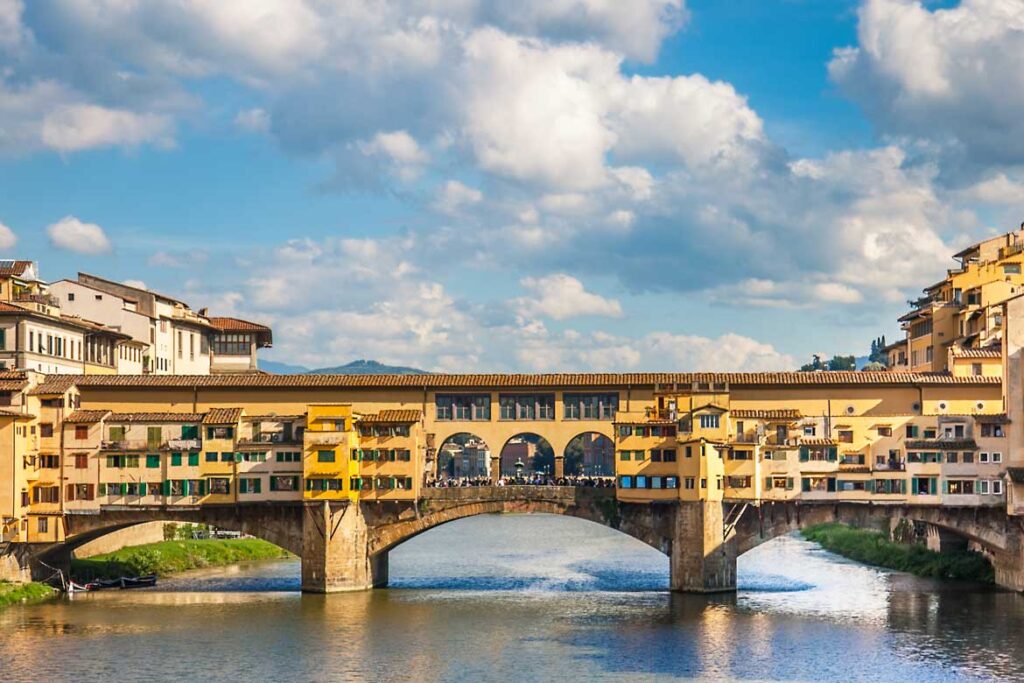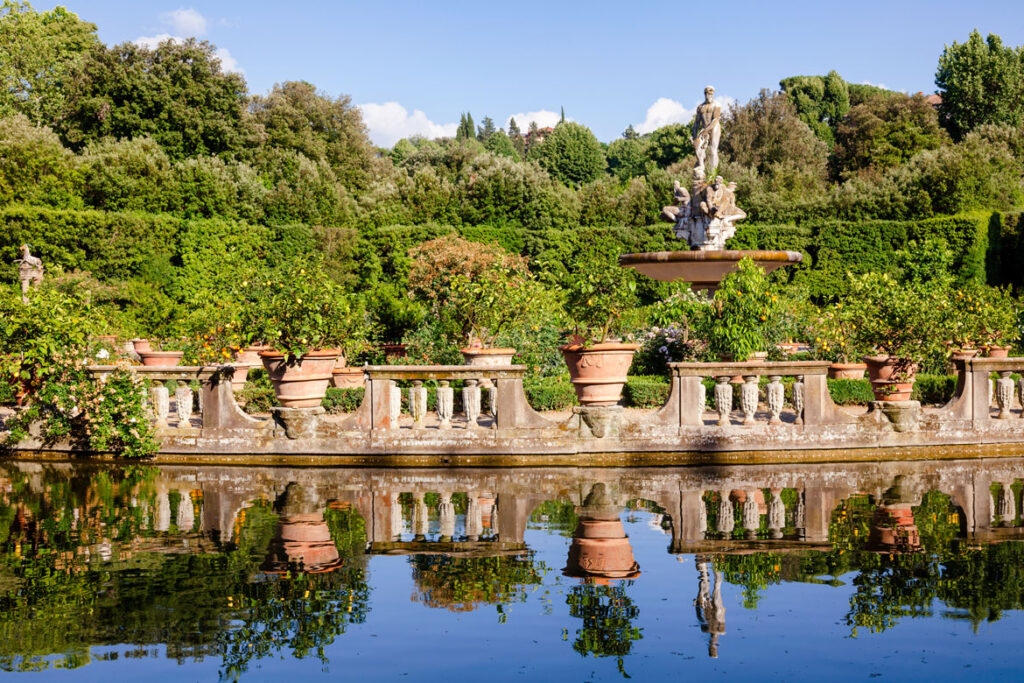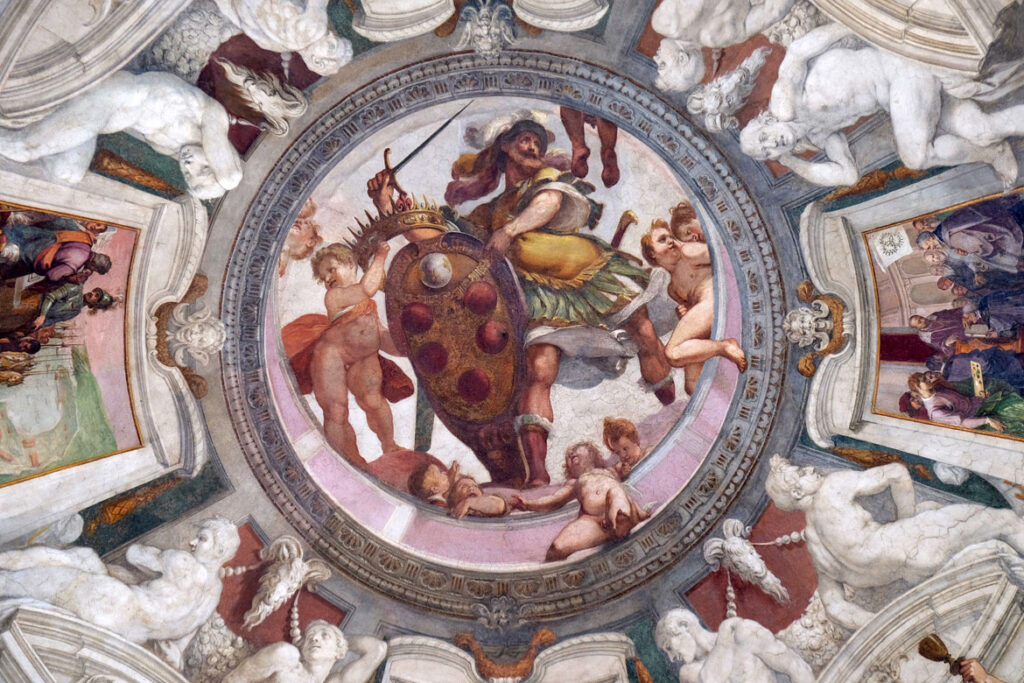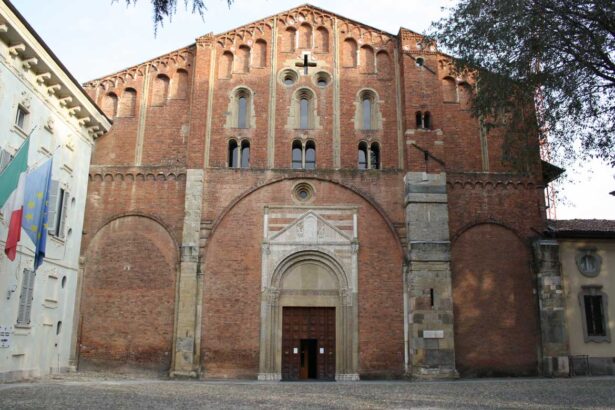20 Must See Sights in Florence Italy
Here are 20 must-see sights in Florence, Italy, each with a short description to introduce visitors to the highlights of each place.
Florence Cathedral (Il Duomo): This iconic cathedral, officially known as the Cathedral of Santa Maria del Fiore, is renowned for its magnificent dome designed by Filippo Brunelleschi. The exterior is adorned with intricate marble panels in shades of green and pink bordered by white. Inside, you can admire beautiful frescoes and climb to the top of the dome for a panoramic view of Florence. The adjacent Baptistery of St. John is famous for its bronze doors, dubbed the “Gates of Paradise” by Michelangelo. The cathedral complex also includes Giotto’s Campanile, a stunning bell tower.
Uffizi Gallery: One of the most famous art museums in the world, the Uffizi Gallery houses an unparalleled collection of Renaissance masterpieces. Visitors can see works by Botticelli, including “The Birth of Venus” and “Primavera,” as well as paintings by Leonardo da Vinci, Michelangelo, and Raphael. The gallery itself is a work of art, with its grand corridors and beautifully decorated rooms. It offers a comprehensive overview of Italian art from the Middle Ages to the Modern period. Be sure to book tickets in advance to avoid long lines.
Ponte Vecchio: This medieval stone bridge is one of Florence’s most recognizable landmarks. It spans the Arno River and is lined with shops selling jewelry, art, and souvenirs. The bridge has a rich history, having survived numerous floods and even World War II. It offers picturesque views of the river and the city. The Vasari Corridor, an elevated passageway, runs above the shops and connects the Uffizi Gallery to the Pitti Palace.

Piazza della Signoria: This historic square is the political heart of Florence and home to the Palazzo Vecchio, the city’s town hall. The square is adorned with impressive statues, including a replica of Michelangelo’s David and the Fountain of Neptune. The Loggia dei Lanzi, an open-air sculpture gallery, features works such as Benvenuto Cellini’s “Perseus with the Head of Medusa.” The square has been the site of many significant events in Florence’s history. It’s a great place to soak in the city’s vibrant atmosphere.
Galleria dell’Accademia: This museum is best known for housing Michelangelo’s David, a masterpiece of Renaissance sculpture. The statue stands 17 feet tall and is a symbol of strength and youthful beauty. The museum also features other works by Michelangelo, as well as a collection of Renaissance paintings and musical instruments. The Hall of the Prisoners contains unfinished sculptures by Michelangelo, offering insight into his creative process. The museum provides a deep dive into the art and culture of the Renaissance.
Boboli Gardens: Located behind the Pitti Palace, these expansive gardens are a green oasis in the heart of Florence. They were designed in the 16th century and feature a mix of formal gardens, sculptures, fountains, and grottos. Highlights include the Amphitheatre, the Fountain of Neptune, and the Grotta del Buontalenti. The gardens offer stunning views of the city and the surrounding hills. It’s a perfect place for a leisurely stroll and to escape the hustle and bustle of the city.

Basilica of Santa Croce: Known as the Temple of the Italian Glories, this Franciscan church is the final resting place of many illustrious Italians, including Michelangelo, Galileo, and Machiavelli. The basilica’s interior is adorned with beautiful frescoes by Giotto and his followers. The Pazzi Chapel, designed by Brunelleschi, is a masterpiece of Renaissance architecture. The church also houses a museum with a collection of religious art and artifacts. It’s a place of great historical and cultural significance.
Pitti Palace: This grand palace was once the residence of the powerful Medici family. Today, it houses several museums, including the Palatine Gallery, which features works by Raphael, Titian, and Rubens. The Royal Apartments offer a glimpse into the opulent lifestyle of the Medici and later royal families. The palace also includes the Gallery of Modern Art and the Museum of Costume and Fashion. The Boboli Gardens are accessible from the palace, making it a comprehensive cultural experience.
Piazzale Michelangelo: This square offers one of the best panoramic views of Florence, especially at sunset. It was designed in the 19th century by architect Giuseppe Poggi as part of the city’s redevelopment. The square features a bronze replica of Michelangelo’s David and several other statues. It’s a popular spot for tourists and locals alike to take in the breathtaking scenery. The view encompasses the Arno River, the Duomo, and the rolling hills beyond the city.
Basilica of Santa Maria Novella: This Dominican church is known for its striking façade, designed by Leon Battista Alberti. The interior is filled with beautiful frescoes by artists such as Masaccio, Ghirlandaio, and Filippino Lippi. The church also houses important works of art, including the Trinity by Masaccio and the Crucifix by Giotto. The adjacent cloisters and the museum offer further insights into the church’s history and art. It’s a must-visit for art and architecture enthusiasts.
Bargello Museum: Housed in a former prison and barracks, the Bargello Museum is home to an impressive collection of Renaissance sculptures. Highlights include works by Donatello, Michelangelo, and Verrocchio. The museum also features decorative arts, including ceramics, textiles, and armor. The building itself is a fine example of medieval architecture, with its fortified walls and tower. It’s a treasure trove of Renaissance art and history.
San Lorenzo Market: This bustling market is a great place to experience the local culture and cuisine. The market is divided into two sections: the indoor Mercato Centrale, which offers fresh produce, meats, cheeses, and other food items, and the outdoor market, which sells leather goods, clothing, and souvenirs. It’s a vibrant and lively place, perfect for shopping and sampling local delicacies. The market is also close to the Basilica of San Lorenzo, another important historical site.
Palazzo Vecchio: This fortress-like palace has been the seat of Florence’s government since the 14th century. The interior is richly decorated with frescoes, sculptures, and ornate rooms, including the Hall of the Five Hundred. Visitors can explore the palace’s various chambers, climb the tower for a panoramic view of the city, and visit the underground ruins of a Roman theater. The palace also houses a museum with a collection of art and historical artifacts. It’s a fascinating glimpse into Florence’s political and artistic heritage.
Basilica of San Miniato al Monte: Perched on a hill overlooking Florence, this Romanesque church offers stunning views of the city. The church is known for its beautiful façade, intricate mosaics, and serene atmosphere. The interior features a mix of Romanesque and Gothic elements, with a crypt and a chapel decorated with frescoes. The adjacent cemetery is the final resting place of many notable Florentines. It’s a peaceful and picturesque spot, perfect for reflection and contemplation.
Museo Galileo: This museum is dedicated to the history of science and houses an extensive collection of scientific instruments. Highlights include Galileo’s telescopes, globes, and other instruments used in his groundbreaking discoveries. The museum also features exhibits on the history of astronomy, physics, and mathematics. Interactive displays and multimedia presentations make it an engaging experience for visitors of all ages. It’s a must-visit for anyone interested in the history of science and innovation.
Hospital of the Innocents (Ospedale degli Innocenti): Designed by Filippo Brunelleschi, this building is one of the earliest examples of Renaissance architecture. It was originally a children’s orphanage and now houses a museum dedicated to its history and the care of abandoned children. The museum features artworks by artists such as Ghirlandaio and Botticelli. The building’s loggia, with its elegant arches and columns, is a notable architectural feature. It’s a place of historical and social significance, reflecting Florence’s commitment to social welfare.

Basilica of Santo Spirito: This church, designed by Brunelleschi, is located in the Oltrarno district. The interior is known for its harmonious proportions and serene atmosphere. It houses important artworks, including a wooden crucifix by Michelangelo. The church’s simple façade contrasts with its richly decorated interior. It’s a beautiful example of Renaissance architecture and a peaceful place to visit.
Medici Chapels: These chapels, located in the Basilica of San Lorenzo, are the final resting place of many members of the Medici family. The New Sacristy, designed by Michelangelo, features his sculptures of the Medici tombs. The Chapel of the Princes is a grand mausoleum with an opulent interior. The chapels reflect the power and influence of the Medici family in Florence. They are a testament to the city’s rich artistic and cultural heritage.
Santa Trinita Church: This church, located near the Ponte Santa Trinita, is known for its beautiful Sassetti Chapel, which features frescoes by Ghirlandaio. The church’s Gothic façade was added in the 16th century. The interior is filled with artworks and has a serene, contemplative atmosphere. It’s a lesser-known gem in Florence, offering a quieter experience away from the crowds.
Fiesole is a charming town located on a scenic hilltop just 5 kilometers northeast of Florence, offering stunning panoramic views of the city and the surrounding Tuscan countryside. Founded by the Etruscans in the 9th–8th century BC, it boasts a rich history with well-preserved archaeological sites, including Roman baths and an ancient amphitheater. The town is known for its beautiful Renaissance villas, lush gardens, and cypress-lined lanes, making it a peaceful retreat from the bustling city below. Fiesole has long been a favored spot for the wealthy, with many Florentine nobles building their summer residences here during the Middle Ages. Today, it remains a popular destination for visitors seeking to explore its historical treasures and enjoy its tranquil ambiance.

